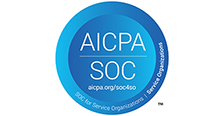
Resources
-
August 21, 2012
The Third Circuit Clarifies the Test to Determine "Joint Employer" Liability Under the FLSA
Written By: Rashmee Sinha
Quite often, Plaintiffs in collective actions brought under the Fair Labor Standard Act, (“FLSA”)(29 U.S.C. 201, et seq.) seek certification of as broad a class as possible in order to obtain a large and lucrative settlement against their employer(s). One way to broaden the class size is to include employees of the employer’s sister companies in the class under the theory that the sister companies’ parent company qualifies as the plaintiffs’ “joint employer.”
On June 28, 2012, in In re Enterprise Rent-a-Car Wage & Hour Employment Practices Litigation, 683 F.3d 462(3d Cir. June 28, 2012) the United States Court of Appeals for the Third Circuit elaborated on the test to determine whether a parent company is a joint employer of its subsidiaries’ employees. The Court cited Third Circuit precedent holding that where two or more employers exert significant control over the same employees or share or co-determine those matters governing essential terms and conditions of employment, an entity may be found to be a joint employer. In setting forth its own analytical framework to determine joint-employer status, the Court noted that the test under the FLSA must be broader than the test used under other statutes such as the Age Discrimination in Employment Act (ADEA) and Title VII, because the FLSA provides for joint employment status not only where there is “direct control” over the relevant employees, but also where there is “indirect” control.
Now coined as the “Enterprise Doctrine,” Courts must consider the alleged employer’s: (1) authority to hire and fire the relevant employees; (2) authority to promulgate work rules and assignments and to set the workers’ conditions of employment, (i.e. compensation, benefits, work schedules, and rates and method of payment); (3) involvement in day-to-day employee supervision and discipline; and, (4) actual control of employee records such as payroll, insurance, or taxes. This is not meant to be an exhaustive list. Rather, these factors should be evaluated in light of other relevant factors that show the entity is exerting significant control over the employees, such as interlocking directorates and the common nature of the business each conducted.
In the Enterprise case, the joint employer question was raised as a result of the filing of a nationwide collective action by assistant branch managers against Enterprise-Rent-A-Car Company of Pittsburgh who were seeking overtime pay under the FLSA. In support of his claim, plaintiff Nickolas Hickton alleged that Enterprise Pittsburgh’s parent company, Enterprise Holdings, Inc. (“Enterprise Holdings”), the sole shareholder of Enterprise Pittsburgh and 37 other domestic subsidiaries was his and other class members’ “joint employer.” After the district court granted Enterprise Holding’s motion for summary judgment on the grounds that it was not a joint employer, Hickton appealed.
Hickton gathered what at first may have appeared to be significant evidence of control: the board of directors of all 38 subsidiaries consists of the same three identical board members, all of whom also serve on the Board of Enterprise Holdings; Enterprise Holdings provides its subsidiaries with shared services including business guidelines, human resource services, (i.e. job descriptions, compensation guidelines, training materials, performance review forms), benefits plans, insurance, technology, and legal services; and these services are paid to Enterprise Holdings via corporate dividends and management fees. Significantly, at a 2005 meeting attended by representatives of both Enterprise Holdings and its subsidiaries, Enterprise Holdings “recommended” that its subsidiaries not pay overtime wages to their assistant branch managers employed outside of California.
Notwithstanding the evidence, the Third Circuit affirmed summary judgment in Enterprise Holdings’ favor and refused to certify a nationwide class against it. The Court concluded that the parent company was not a joint employer even though the interlocking board members and the nature of the business relationship between the parent and subsidiaries weighed in favor of the plaintiff. The Court noted that Enterprise Holdings’ recommendations were analogous to those of a third-party consultant. Finally, the court found that Enterprise Holdings had no authority to hire, fire or discipline assistant managers, or promulgate work rules, supervise assignments or maintain control over employee records. In sum, the Court concluded that even though some of the evidence favored Hickton, the balance of the evidence favored Enterprise Holdings.
Employers should be aware that courts within the Third Circuit (New Jersey, Pennsylvania, Delaware and the U.S. Virgin Islands) will apply the “Enterprise” test going forward. Joint-employer status under the FLSA continues to require a fact-specific analysis, especially in the parent-subsidiary context. If you would like your company’s operations evaluated for potential joint-employer liability, please contact Rashmee Sinha, Esq. at Hill Wallack, LLP.
About Hill Wallack LLP
Hill Wallack LLP is a leading law firm in New Jersey and eastern Pennsylvania that has built a reputation for problem-solving and aggressive advocacy. The firm has comprehensive commercial capabilities and deep experience in a number of industry sectors. With extensive government experience, Hill Wallack LLP represents businesses and public entities in many areas in which public and private interests intersect. The firm's offices are located in Princeton, N.J. and Yardley, Pa.
When called upon to tackle tough legal and business challenges, we do more than advise on the law—we create real-world solutions.
For more information, contact the author of this Client Alert:
This article provides information of general interest and is not intended, and should not be used, as a substitute for consultation with legal counsel. Any questions regarding the specific issues raised in this article should be directed to the authors or to your contacts at Hill Wallack LLP.


